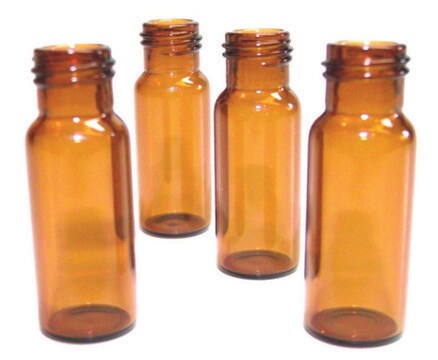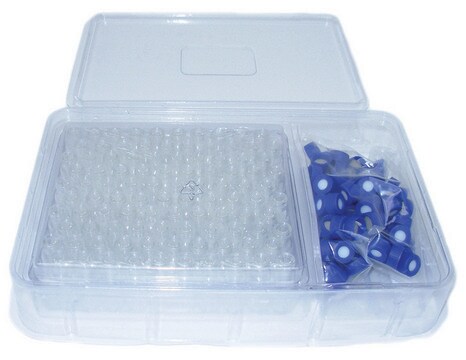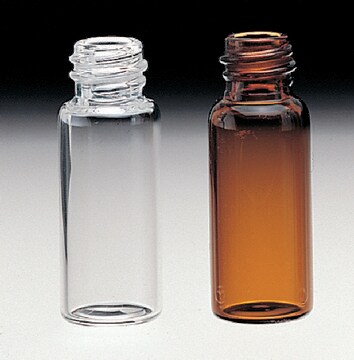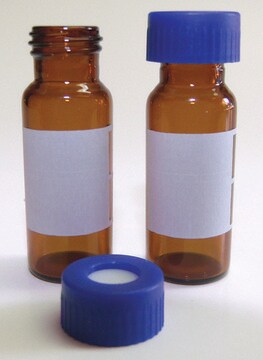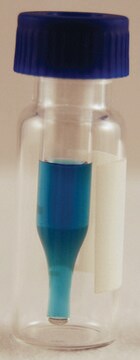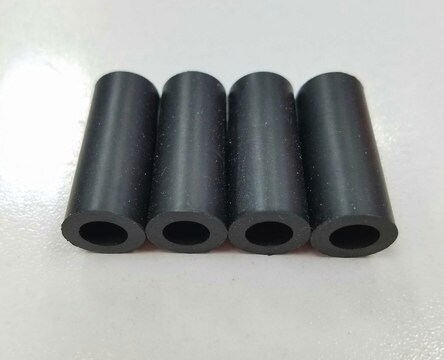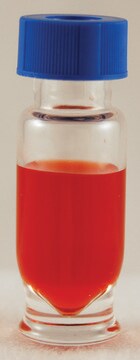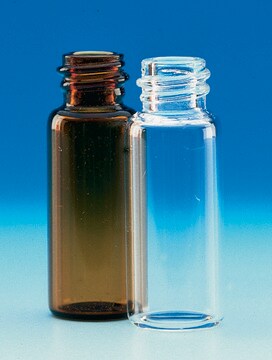29652-U
Certified Vial Kit, Low Adsorption (LA), 2 mL, pk of 100
volume 2 mL, clear glass vial (with marking spot), natural PTFE/silicone septa (with slit), thread for 9 mm
Synonym(s):
Low Adsorption Certified Vial Kit
About This Item
Recommended Products
material
clear glass vial (with marking spot)
light blue polypropylene cap (Mass Spec quality)
natural PTFE/silicone septa (with slit)
feature
closure type screw top vial
packaging
pkg of 100 ea
O.D. × H × I.D.
12 mm × 32 mm × 6 mm
volume
2 mL
fitting
thread for 9 mm
compatibility
for use with Agilent/HP
for use with Thermo Fisher
for use with Waters
Looking for similar products? Visit Product Comparison Guide
General description
These vials and closures are designed, engineered, and manufactured for optimum performance in HPLC, GC/MS, and LC/MS applications. All of the parts of the vial system (vial, cap, and septum) can come into contact with the sample and are critical to the outcome of the analysis.
We recommend using LA vials with MSQ polypropylene cap/PTFE silicone septa. This cap and septa combination was purposely designed for use with mass spectrometry. It shows little to no background contamination when compared to other cap and septa products in the marketplace.
accessory
related product
Storage Class Code
11 - Combustible Solids
WGK
WGK 3
Flash Point(F)
Not applicable
Flash Point(C)
Not applicable
Choose from one of the most recent versions:
Certificates of Analysis (COA)
Sorry, we don't have COAs for this product available online at this time.
If you need assistance, please contact Customer Support.
Already Own This Product?
Find documentation for the products that you have recently purchased in the Document Library.
Customers Also Viewed
Articles
Pistachios contain approximately 45% fat, which can result in a significant amount of coextracted matrix in the acetonitrile extract generated using the QuEChERS procedure. A zirconia based adsorbent significantly reduces coextracted matrix prior to LC-MS or GC-MS.
Protocols
Paprika is a spice made from dried sweet peppers, and is used for flavor and color in many types of cuisine. Contamination with polynuclear aromatic hydrocarbons (PAHs) can occur when pepper plants are exposed to these pollutants in the environment and/or during the drying process.
Our team of scientists has experience in all areas of research including Life Science, Material Science, Chemical Synthesis, Chromatography, Analytical and many others.
Contact Technical Service
